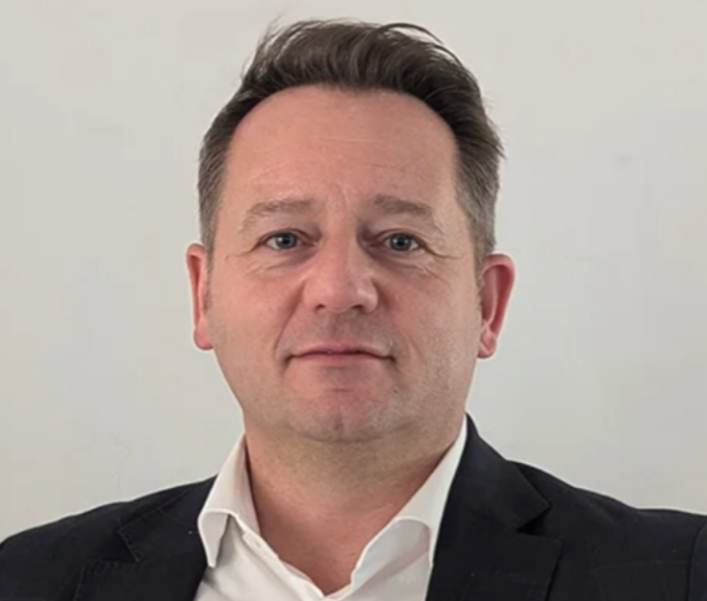Why did you take over the torch from Gaëtan Lefèvre as president of BELRIM?
Bart Smets: On the one hand, when Gaëtan asked me to become vice-chairman a few years ago, I suspected that the ultimate intention would be to succeed him. On the other hand, I think BELRIM is a strong and interesting organisation and it has always appealed to me to play a pioneering role, lead a team and act as coordinator. On top of that, I find the contacts that can be made across the sector interesting and very enriching: after all, you come into contact with a very wide range of people at all levels. And finally, let’s not forget enterprise risk management, which is also something I want to put more on the map during my presidency.
You work as head of Risk & Insurance at Umicore. Does your employer support you in this new role?
Bart Smets: I have of course discussed this internally at Umicore and my employer supports me in this. It does require some extra time, of course, so the employer has to agree. It’s obvious that my work at Umicore comes first and that’s the case for everyone on the board. But I do have the feeling within Umicore, because I still have colleagues in similar positions, that people fully support such initiatives. There is an awareness that both for the company, but also for personal development and contacts, such functions are very interesting.
How did you actually grow from ordinary member to chairman?
Bart Smets: I joined BELRIM in 2012, shortly after I started as Risk & Insurance Manager at Eurofins. From the beginning, I was actively involved and attended almost all events. A few times I was asked to give presentations or participate in panels. At one point, Ann De Wilde, the general secretary of BELRIM, called me to ask if I was interested in joining the board of directors. After consulting with my employer, I decided to do so. As a board member, I helped organise events and was partly responsible for finding venues, speakers and setting up presentations. Later, I was asked to become vice-chairman, which I accepted with enthusiasm. BELRIM has always been important to me and I wanted to put my shoulders to the wheel even more.
What emphases do you want to place within the organisation in the coming years?
Bart Smets: There are a number of points I want to focus on. Firstly, I want to put more emphasis on enterprise risk management. Secondly, I want to get more in touch with SMEs and involve them more closely. And thirdly, I aim to attract even more youth, an important link to the future. I think we have already taken important steps because that group is growing within the organisation. We are now also working on giving them a separate framework and their own budget so that they can organise their own Young BELRIM events. And in terms of training, I think we can take a few more steps as well.
Is attracting young people a big challenge?
Bart Smets: Certainly, in the conversations I have had with a number of partners, the question of how to get enough young people interested in the profession and the sector always comes up. And that in the broadest sense, so not only for insurance, but also for enterprise risk management. I think BELRIM has a role to play in pulling the cart, in setting something up so that young people who are currently studying or have just graduated can get more in touch with the sector. What does this profession stand for? Because anyway, it remains an unprecedented profession in which a lot of work is done in the shadows and one has to sell oneself well within the company. We are actually specialists in our profession while in other departments within the companies there are often several employees doing the same activity. That is also what makes the profession of Risk & Insurance Manager so special.
How much time do you put into BELRIM?
Bart Smets: That depends on the activities, with peaks and troughs. For larger events, such as the recent end-of-year event, I am more intensively involved. Although I have been involved in BELRIM for more than 10 years, the role of chairman is new to me. This naturally brings additional responsibilities. The first months have mainly been a learning process. Although I do not do everything myself (fortunately, we have a good team within the Board), I am closely involved in following up and preparing many things. I don’t keep track of the exact percentage of time, because I enjoy doing it. In addition, it requires extra time now because we also have to fit in Ann De Wilde’s replacement and, of course, this is all still new.
Could you describe BELRIM as a community?
Bart Smets: I consider BELRIM to be a valuable community for the entire sector. Especially the informal character and the exchange of information between members are strengths. In everyday life, our companies are sometimes competitors of each other, and this is certainly the case for our suppliers, but risk and insurance managers are less so. During events, however, it feels like one family, also because the Insurance and Risk Community in Belgium is relatively small, especially in the field of industrial insurance. This was also noted at a FERMA meeting, where a Regional CEO of an insurer said he had rarely seen such a close-knit group. It really is a fun and cohesive group.
Does it happen that you discuss a problem with a colleague at BELRIM?
Bart Smets: Yes indeed. I regularly get calls from people asking if I have already dealt with a particular situation and whether I can help them. And this will be no different with my colleagues. This informal contact is essential and, as far as I’m concerned, may happen even more often. Our tribal cafés certainly contribute to this. These small-scale, virtual meetings provide a platform where risk professionals in companies can talk freely and openly about specific topics. We share experiences and solutions in a confidential environment. Outside these meetings, I myself sometimes call colleagues when I get stuck with a problem. It is important that this is possible.
What are the major differences of risk management before and now?
Bart Smets: I still find the risk management sector very fascinating, both in the field of insurance and risk in the broad sense, because things are constantly changing. In the past, risk management was often a simple exercise: sitting around the table for an hour and listing possible risks, often a ‘check-the-box’ exercise. Today, it has become a discipline in its own right. In fact, it goes beyond insurance management, which used to be pretty much the only focus. You also see in a lot of companies that the function is now higher up in the organisation, sometimes in the executive committee itself, sometimes just below it. So you notice in practice that the function is gaining importance, and certainly with the whole reporting thing in Europe like CSRD and everything around ESG, which has brought with it specific risks and reporting methods. There’s no getting away from that. And whether you work that within an ESG team or an umbrella function, everywhere is risk and everywhere risk needs to be mapped and managed . In addition, technological progress today offers new opportunities, but also new risks and that requires the necessary adjustments, which I find particularly interesting.
President of BELRIM Bart Smets with winner of the Jo Willaert Award 2024, Thomas Tagnit (Lhoist)
How do you think risk management will evolve over the next three to five years?
Bart Smets: In the next three to five years, the role of risk management will increase significantly in importance. In a rapidly changing world, it is crucial for professionals in this function to embrace and effectively implement new technologies. Without this adaptation, you risk remaining stagnant as an organisation, ultimately leading to decline. Although technology and AI are becoming increasingly sophisticated, they will not completely replace the human role in risk management. It remains essential to have conversations and make connections to fully understand and manage risk. One of the biggest changes we are seeing is the increased interconnection of risks. Whereas risks were often isolated in the past, they are now closely intertwined. An event in one part of an organisation can have far-reaching consequences in another. This makes it necessary to take a holistic approach to identifying and managing risks. But in essence, you always keep doing the same thing: you start looking at where are my risks and how can I address them.
And how important is technology in this?
Bart Smets: Technology plays an important role in this. Modern tools, including AI, offer the ability to map and analyse those complex relationships between different risks. These technological advances not only help companies to better understand risks, but also to proactively develop strategies that can minimise impact and maximise opportunities. Moreover, I expect the role of the risk manager himself to evolve into an even more strategic position within organisations. This means there will be more emphasis on communication and collaboration with other departments, such as IT and compliance, to ensure an integrated approach to risk management. Ultimately, the effectiveness of risk management in the future will depend on the willingness and ability to embrace these developments and integrate them into daily practice.
How do you see the future of BELRIM?
Bart Smets: I see it positively and expect our membership to grow further. We have several ideas to realise this. The role of risk and insurance managers is becoming increasingly important in large companies, which will bring more professionals into our sector. However, it is essential to keep focusing on informal consultation and knowledge sharing, which is one of our strengths. The easy access to each other within our community is valuable because everyone knows each other. In addition, we will have to embrace all ongoing changes within BELRIM. It is not just about theory or regulations, such as creating an AI policy. More important is sharing what tools really help in practice. What are colleagues using? What have they tried and what works effectively? It is this practical exchange that BELRIM should promote even more.
Finally, what topics would you like to see covered at events in the coming years?
Bart Smets: I don’t want to mention specific topics right away, because we usually discuss this within our organisation and with our members. We regularly ask them what they are interested in. For me, it is important that topics are practical and applicable. The occasional purely theoretical or technical topic can certainly be interesting, but I think the real added value lies in sessions where people get practical tips, best practices and actionable insights. It is not useful to explain legislation over and over again. Instead, we should combine theory with practical applications and products. By showing how others approach certain situations, we as BELRIM can offer real added value.









